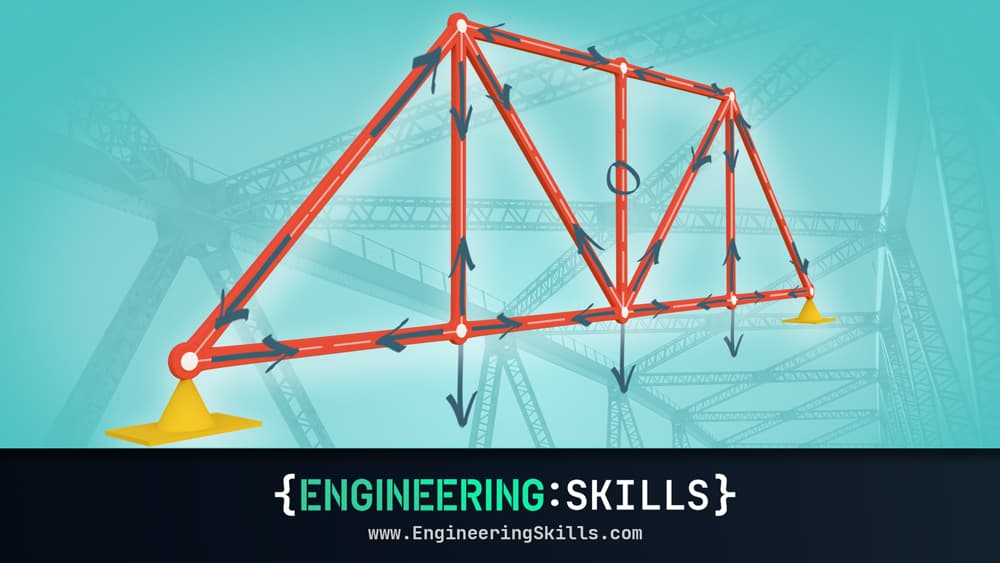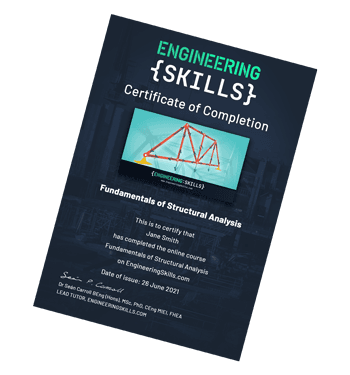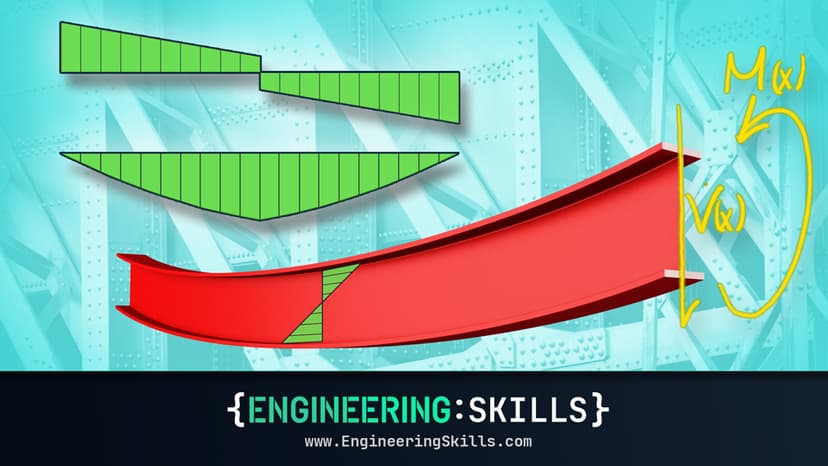
Fundamentals of Structural Analysis
Get to grips with civil engineering structural analysis once and for all.
Request student access to this course here
- You will understand key concepts such as the moment of a force, static equilibrium and determinacy.
- You will be able to determine the support reactions for structures subject to a range of loading conditions.
- You will learn to use the Joint Resolution Method and Method of Sections to analyse pin-jointed truss structures.
- You will understand the key differences between simplified analysis models and the behaviour of real world structures.
This course covers fundamental concepts and methods in static structural analysis. Starting with the very basics, we consider forces, moments and how to use the principle of static equilibrium. We then move on to look at pin-jointed structures or trusses; what are they and how do we analyse them?
We’ll cover the joint resolution method and method of sections in detail.
Worked examples are used extensively to demonstrate the practical application of theory.
Based on my experience teaching engineering undergraduates, the course focuses on those areas students find particularly tricky when starting out. The link between theory and practice is reinforced using my experience as a structural design engineer. The course includes video lectures which combine screencast voice over with traditional style lectures.
The emphasis is on worked examples with students encouraged to try questions before the detailed solution is presented. The teaching philosophy is ‘learn by doing!’.
This course is suitable for engineering students who find their structures lectures confusing and feel a little lost when it comes to structural analysis.
Students wishing to get a head start before starting their degree programme or more advanced engineering students who need a refresher would also benefit from taking this course.
Who this course is for
- This course is great for undergraduate engineering students who feel a little lost in their structures lectures. We start from scratch, establishing the basics and build from there.
- More advanced engineering students who want a refresher or who didn’t quite grasp the fundamentals first time around would also benefit from this course.
- If you’re about to start an engineering program, this course is a great way to get a head start.
- If you’re a structures genius already, this course is probably not for you.

Download your personalised Certificate of Completion once you’ve finished all course lectures.
Applying for jobs? Use your Certificate of Completion to show prospective employers what you’ve been doing to improve your capabilities.
Independently completing an online course is an achievement. Let people know about it by posting your Certificate of Completion on your Linkedin profile or workplace CPD portfolio.
The Getting Started in Structural Analysis Course Bundle
Lay a solid foundation for your structural analysis journey with these key starter courses.
- Fundamentals of Structural Analysis
- Mastering Shear Force & Bending Moment Diagrams
- Indeterminate Structures & The Moment Distribution Method

